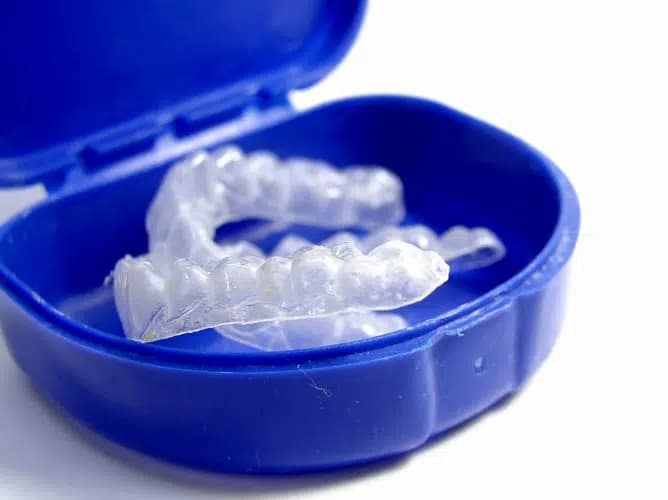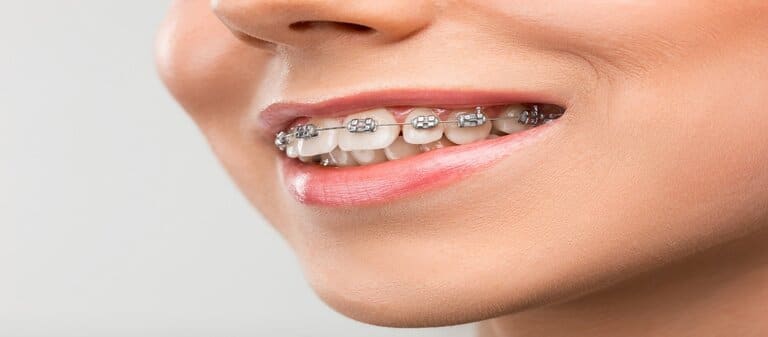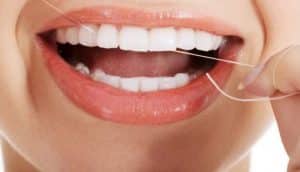Malocclusion of Teeth
Malocclusion of teeth refers to the problem of misaligned teeth and bite. This problem is usually inherited, but there are many other reasons as well that affect the alignment of your teeth. Some of the common causes of Malocclusion are impacted teeth, cleft lip and palate, prolonged use of a pacifier in childhood, gum disease, early loss of milk tooth, and other factors.
Various types of teeth alignment problems can affect children as well as adults. Some of the common malocclusion types are as follows:
- Overcrowding – This is a common type of malocclusion that affects most adults. Overcrowding of teeth is a result of a lack of space in a person’s mouth. It causes the teeth to overlap and grow crookedly.
- Overbite – When the upper front teeth overlap the lower front teeth to a great extent, the problem of overbite arises. It leads to unhealthy teeth wearing, aesthetic concerns, and in some cases even jaw pain.
- Overjet – This problem occurs when a person’s top teeth extend past the bottom teeth horizontally. Overjet can lead to complications while eating and speaking.
- Crossbite – When a person’s upper teeth bite inside the lower teeth, the problem of crossbite arises. This problem can affect the front or back teeth.
- Spacing – Too much space between two or more teeth is another common malocclusion problem. Some common reasons behind this problem are tongue thrusting, thumb sucking, and small teeth.
Problems Associated with Misaligned Teeth
Misaligned teeth can lead to physical and psychological problems.
A person with misaligned teeth may feel shy or awkward to smile and talk with people. It can bring down a person’s confidence to interact freely. Another major problem associated with misaligned teeth is improper chewing.
Having a big gap between the teeth can affect speech as well. Misalignment of teeth can create difficulties in brushing or flossing properly. This can lead to the deposit of tartar that can contribute to decaying of teeth.
How to Treat Misaligned Teeth?
Not many people realise the importance of treating misaligned teeth or bite. If ignored for a long time, this problem can have a negative impact on the oral as well as the overall health of a person.
Misaligned teeth are treated by orthodontists. An orthodontist is a specialist in the correction of malocclusion.
To determine what type of treatment your misaligned teeth will require, the orthodontist is likely to take x-rays of your face, mouth, and teeth. X-rays can help examine the position of every tooth, giving your orthodontist an idea on which treatment to perform.
In case of mild misalignment of teeth, the orthodontist may suggest treatments like veneers, crowns, bridges, or dentures that are prosthodontic in nature. If the problem is severe, you will be suggested to opt for braces.
Braces
Braces are considered to be a standard treatment for crooked or crowded teeth. They work on your teeth by continuously applying pressure on them, thus moving them in the right direction. The common components of braces are brackets, archwire, orthodontic bands, spacers, ligatures, and elastics.
Brackets are the small squares that are fixed on the front of the teeth. They hold the archwire that guides the movement of the teeth. To fasten the archwire to the brackets, small rubber rings known as ligatures are used. The orthodontic bands act as an anchor for the brackets and archwire. They are usually placed around the molars to offer support. To fix the orthodontic bands in between the teeth, spacers are used as they help in creating enough space. Elastics make it easy to connect the upper and lower jaw. They are attached to the hooks on the brackets to connect and correct one’s bite.
There are different types of braces to help treat different malocclusion problems. Your orthodontist will recommend a type depending on the condition of your teeth. The different types of braces are traditional braces, ceramic braces, and lingual braces.
Like any other dental procedure, braces too involve some risk. Even though the risks involved are not severe, it is still important to know about them.
Below-given are some risks involved with braces.
Final Outcome
Though your orthodontist may take every effort to get the best results for your braces treatment, there are still chances of the final outcome not being satisfactory for you. The way everybody reacts to a particular treatment is different, and so at times predicting the end results may be difficult. Also, at times the result depends on the patient’s cooperation. Hence, the result may vary on how well the patient accepts the orthodontist’s advice.
Duration of the Treatment
Your orthodontist will provide an estimated time of the treatment. However, there are chances of the duration of the treatment being extended depending on the body’s reaction to the treatment. Some patients may show fast progress, whereas some may show slow progress, causing the treatment to be extended.
Relapse
Even after successfully treating your teeth with braces, there are chances of relapse. After the treatment, the patients are instructed to wear retainers to prevent the teeth from coming back to their original shape. If the orthodontist’s advice is not followed, the chances of relapse are very high.
Root Resorption
Wearing braces for a long period of time can lead to shortening of the roots. Some patients may experience slight blunting of the root tips. However, some may experience shortening of the root up to one-half or more. This can affect the long-term health of the affected teeth.

Myobrace
Myobrace is another method that helps in treating the misalignment of teeth but is different from the earlier mentioned method. It is a no-braces orthodontic approach that straightens your teeth and jaws to a great extent.
Habits like tongue thrusting, thumb sucking, and incorrect swallowing in early age can lead to the malocclusion of teeth. This treatment deals with the poor oral habits of the patient to align the crooked teeth completely. Also, it involves wearing a removable oral appliance for just about 1 or 2 hours a day.
Myobrace, an ideal treatment for kids above the age of 3 years, is used in conjunction with Orofacial Myofunctional Therapy. In some cases, this treatment is suggested to adults as well.
Myobrace treatment involves four main steps:
- Habit correction
- Arch development
- Dental alignment
- Retention
Myobrace is considered to be a better treatment than braces. It not only helps the patients get better results but also saves them the embarrassment of being seen with braces in public.
How to Avoid Either?
Though almost every dental problem has a solution, it is not necessary to let these problems evolve.
Every individual must pay complete attention to his or her oral health to avoid any complicated dental issues. Noticing even small changes in your mouth and consulting your dentist for the same can prevent any issue from growing too big.
The best way to avoid braces or Myobrace is to seek consultation from a dentist or orthodontist at an early stage. You should take your children to the dentist for regular check-ups, so in case of any signs of misalignment of teeth, the dentist or orthodontist can suggest preventive measures at the very beginning. Not only braces or Myobrace, but any other dental issue can be avoided by visiting a dentist every six months. Regular check-ups can help your dentist detect any dental issue at the very beginning, thus preventing it from growing.
For example, if you or your child have recently developed a cavity that you are unaware of, a regular check-up at the dentist can bring this to your attention. Your dentist may then suggest a minor filling and some preventative measures for dental care to avoid further tooth decay.
The dentist will check for any gum related issues, tooth decay or cracks, bite related factors, and aesthetics of your teeth.
Regular check-ups can be beneficial in terms of saving money as well because if dental problems are diagnosed at an early stage, you will not have to spend a lot of money in treating bigger issues.
Another way to avoid dental issues is to maintain good dental hygiene. Regularly brushing, flossing, and mouth rinsing can keep a lot of dental problems at bay. These preventative dental care options can be really beneficial for both adults as well as children.
Get in touch with us today!
To know more about preventative dentistry, you can reach us via our quick contact form or call us on (03) 9923 7633 for more details on preventative options for great dental care.












